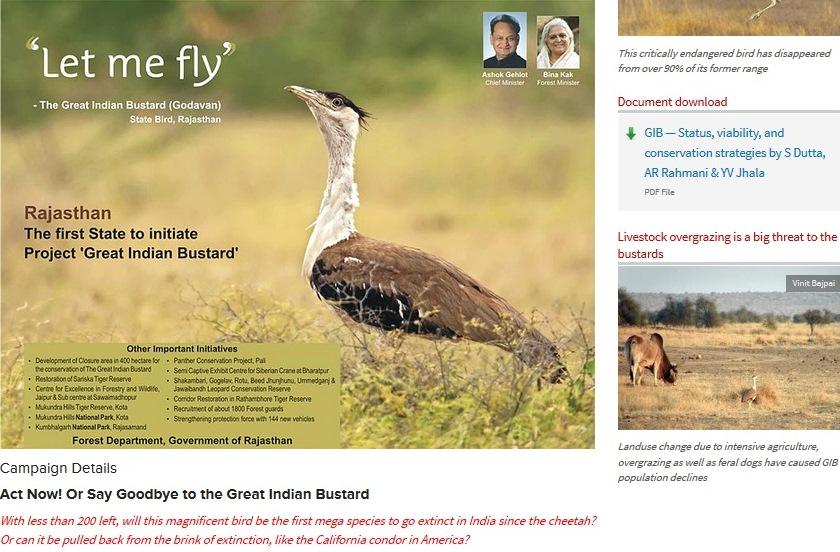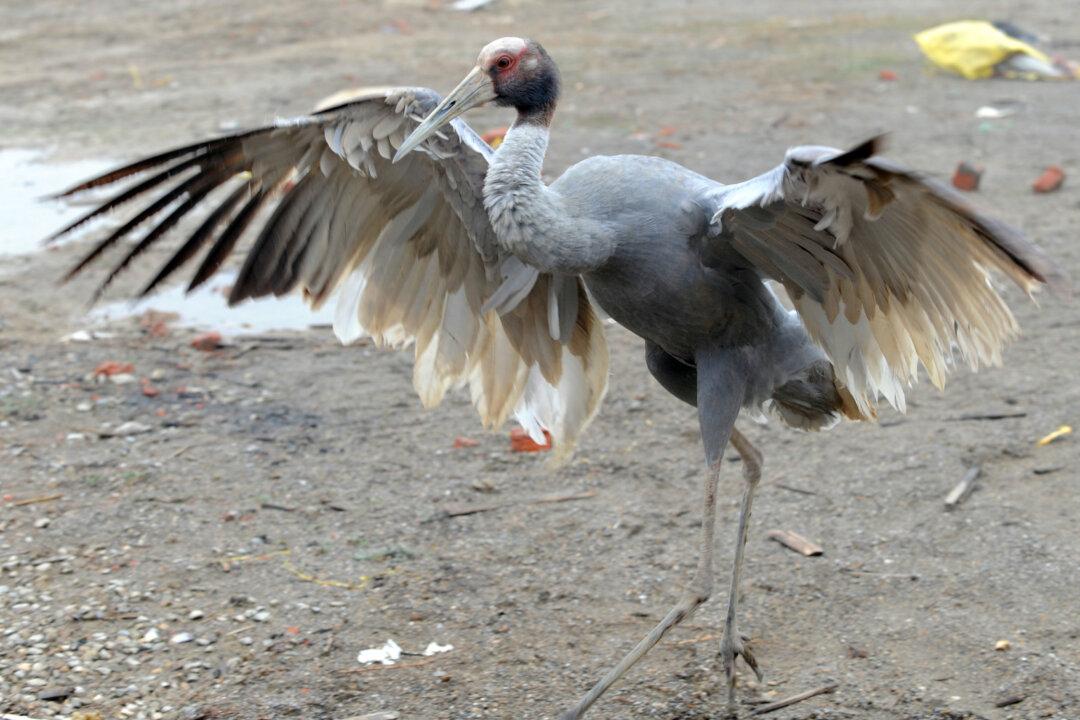One of the world’s heaviest flying birds, the Great Indian Bustard (Ardeotis Nigriceps), now unfortunately stands under the Threatened Bird–2013 list released by the International Union for Conservation of Nature and Natural Resource (IUCN).
The broad-winged, giant bird is marked as critically endangered, a status that counts as the highest level of threat as per IUCN.
“The Great Indian Bustard (GIB) was common during the pre-independence era. It used to be in 11 states, now it is limited to 6 Indian states,” said Dr. Pramod Patil, an advocacy officer for GIB at Bombay Natural History Society of India (BNHS).
Patil says that the bird population estimate in 1980s was around 1,500, during 2003-04 was 500, while currently in 2011 it is around 250-300 birds.
Hunting, habitat destruction, unprotected breeding sites, mismanagement of protected areas, lack of community support to conservation efforts, and lack of integration among different stakeholders and policies have contributed to create the present threat situation for the bird.
To add to this list, Patil mentioned in one of his conservation research papers that stray dogs count as another level of danger to GIB in Bustard sanctuary in Maharashtra state. In Maharashtra, the bird that was seen across the state a few years ago is now reduced to only three districts. At present the bird is seen only at Rajasthan, Madhya Pradesh, Maharashtra, Gujarat, Karnataka, and Andhra Pradesh, according to Patil.
The flying giant can be easily distinguished by its black crown, well placed to contrast with the pale neck and head. The body is brownish and the wings marked with black-brown-grey hues. It breeds mostly during the monsoon season when females lay a single egg in nests situated on grounds. Bustards are omnivorous and feed on insects, lizards, frogs, herbs, wild berries, oil seeds, and legume pods.
Patil said that the BNHS has done most of research on this bird and has proposed for conservation policies since last couple of years. “The BNHS is key organization in developing species recovery plan. This is first ever effort in the conservation history of species in India,” he added.
Despite, the existing conservation law in the Indian statute of Wildlife (protection) Act 1972, there has not been any earnest effort to protect these species.
However, the state of Rajasthan, home to the largest global population of the bird, has the largest stronghold of the GIB, is the first Indian state to announce to recover this critically endangered bird by initiating a package of approximately rupees 12 million (around $1.9 million) under the campaign of Conservation India—a non-profit portal that aims to facilitate wildlife and nature conservation.
“With less than 200 left, will this magnificent bird be the first mega species to go extinct in India since the cheetah? Or can it be pulled back from the brink of extinction, like the California condor in America?” highlights the Conservation India website.

